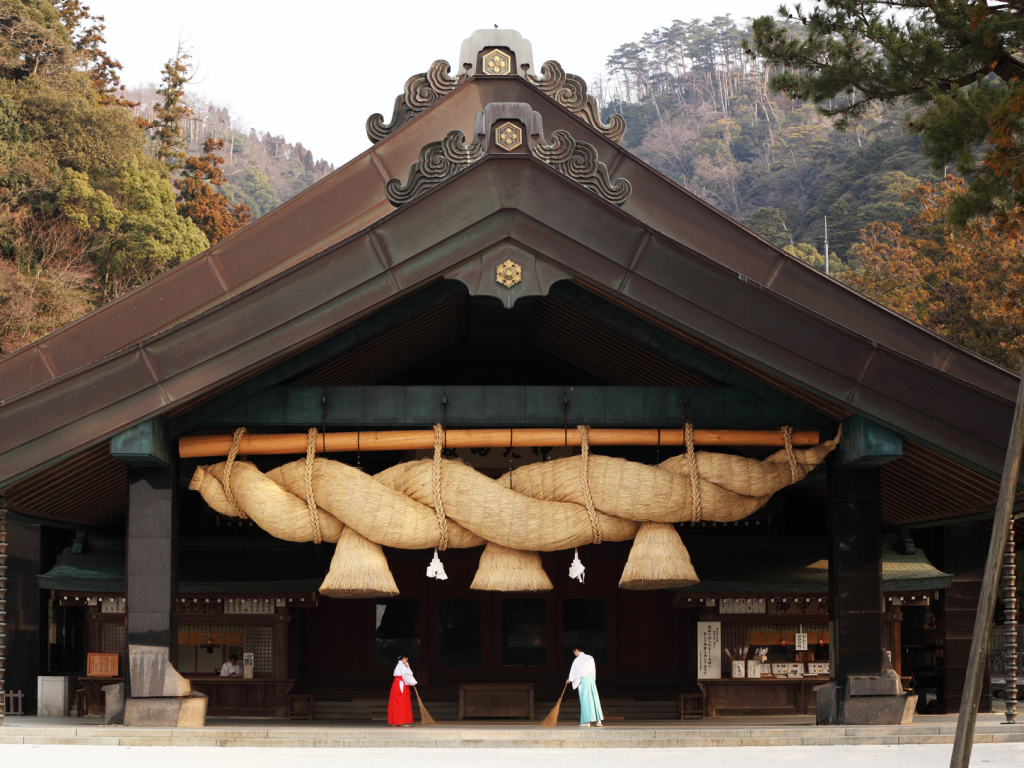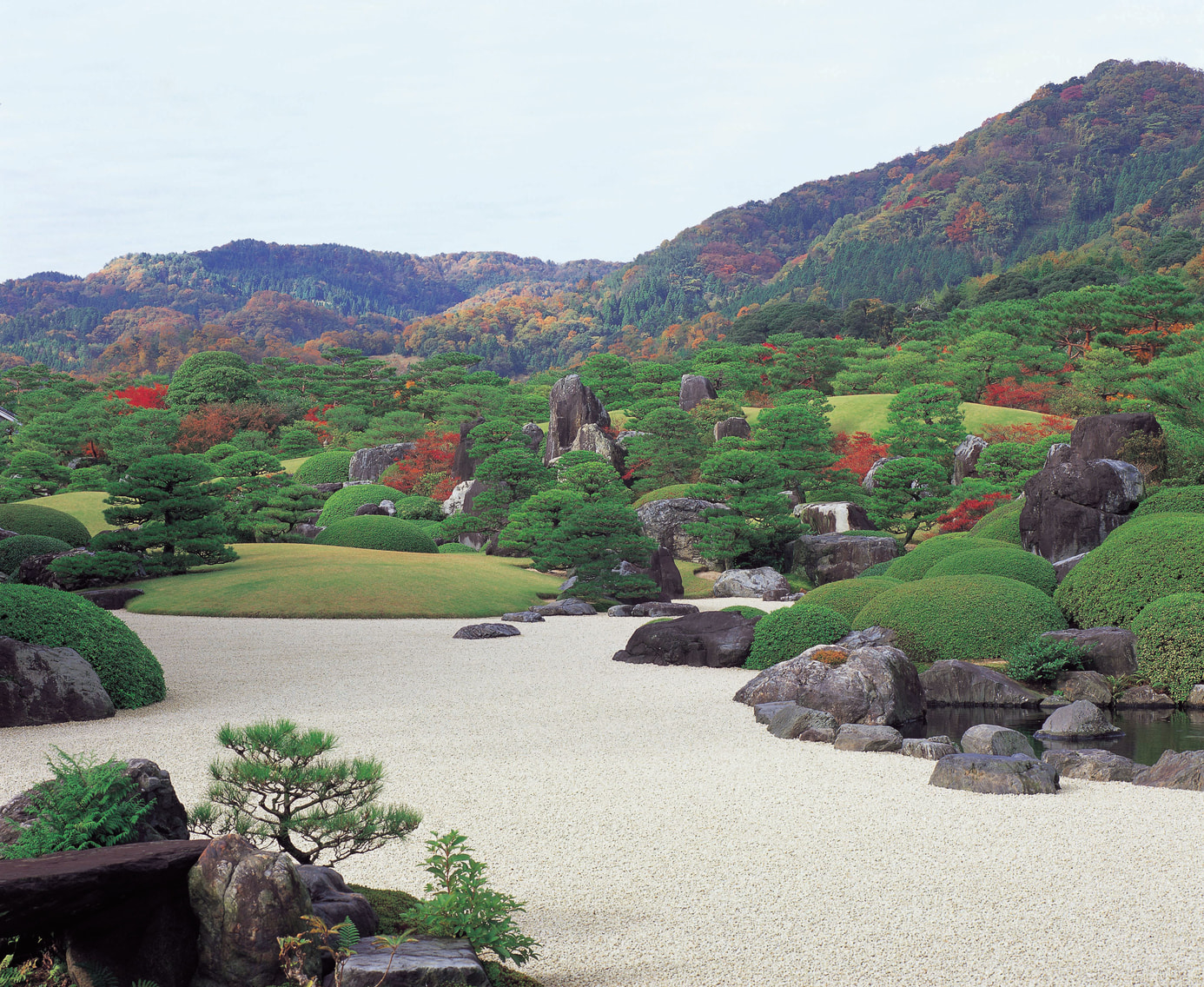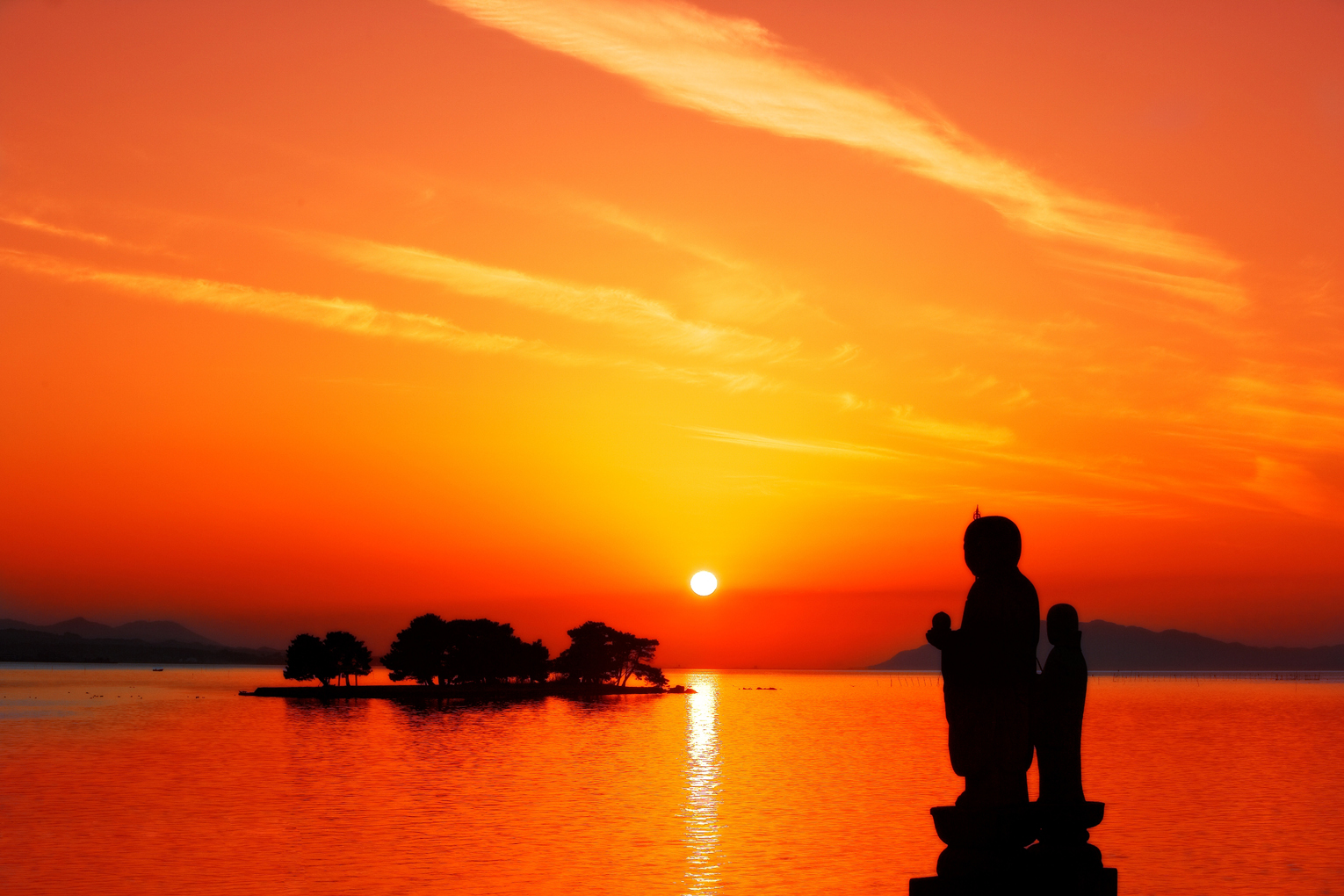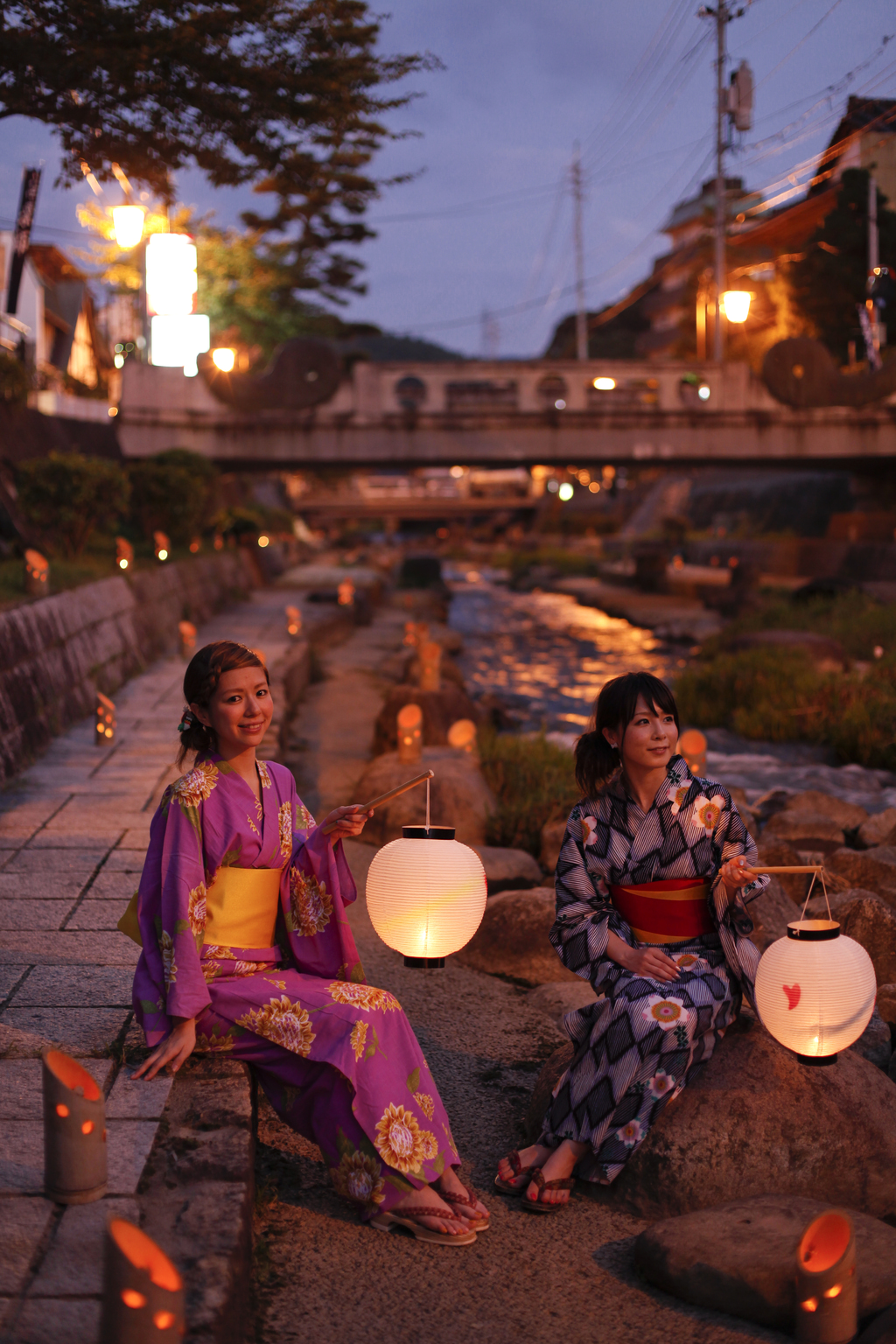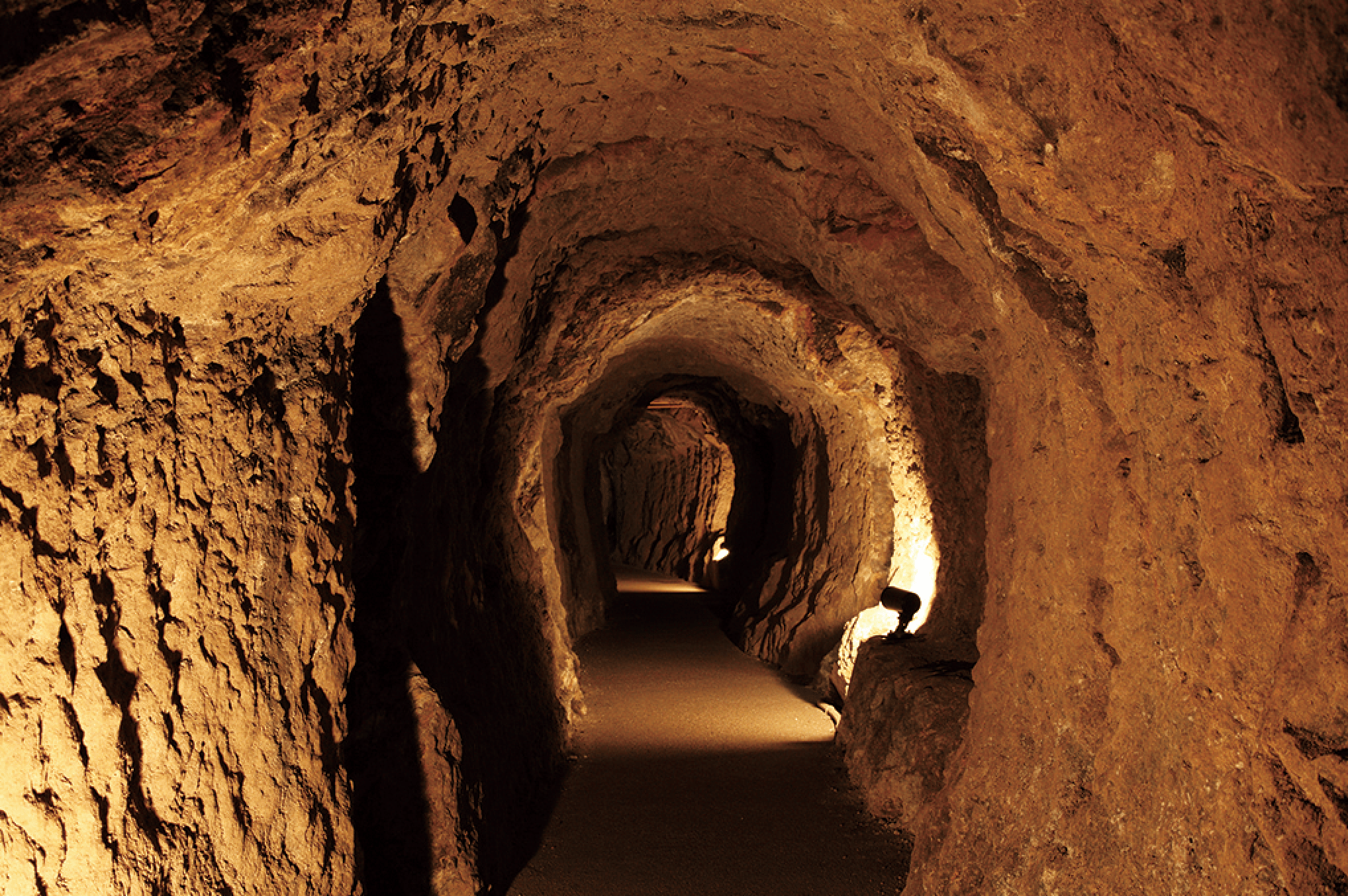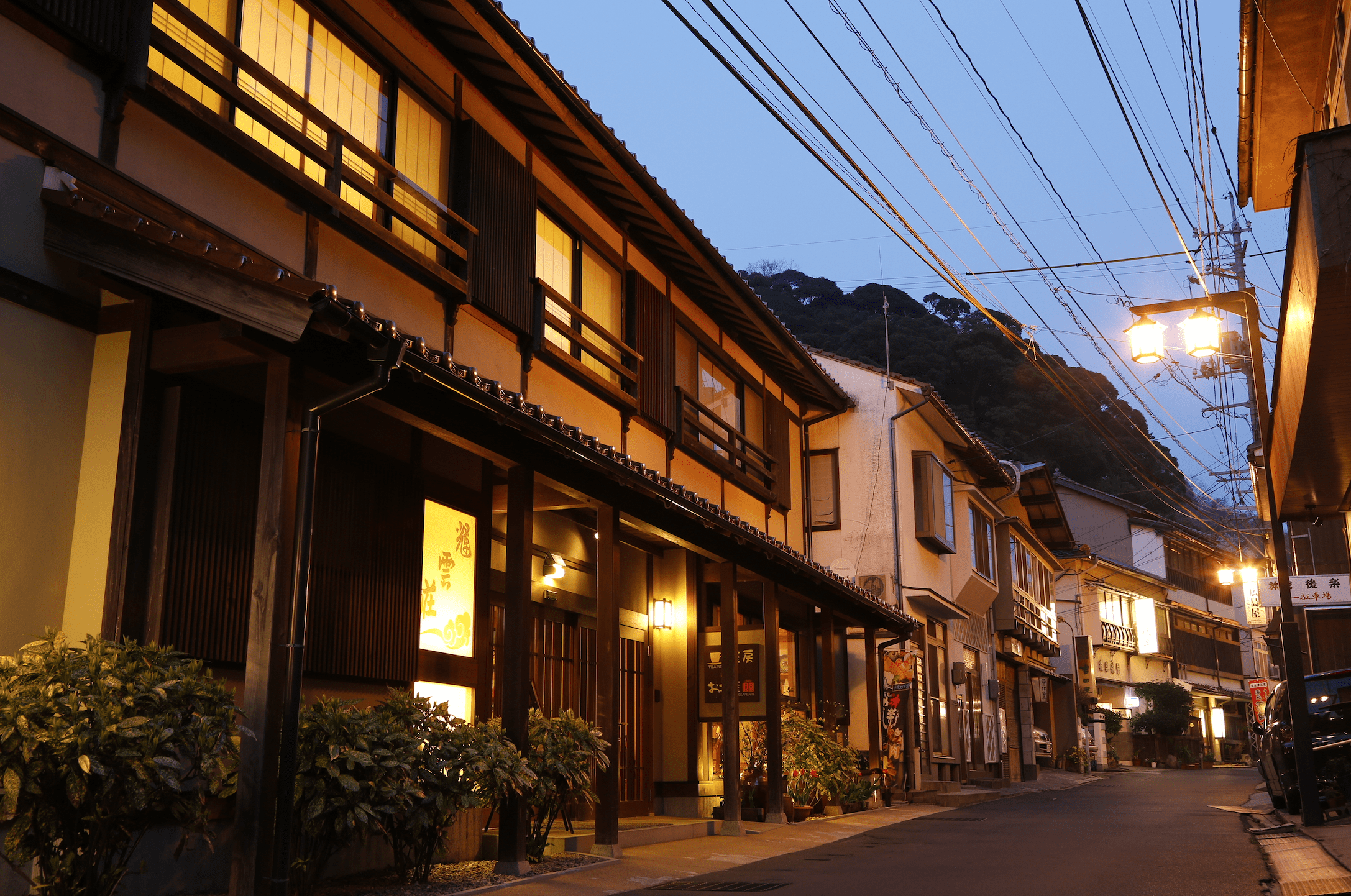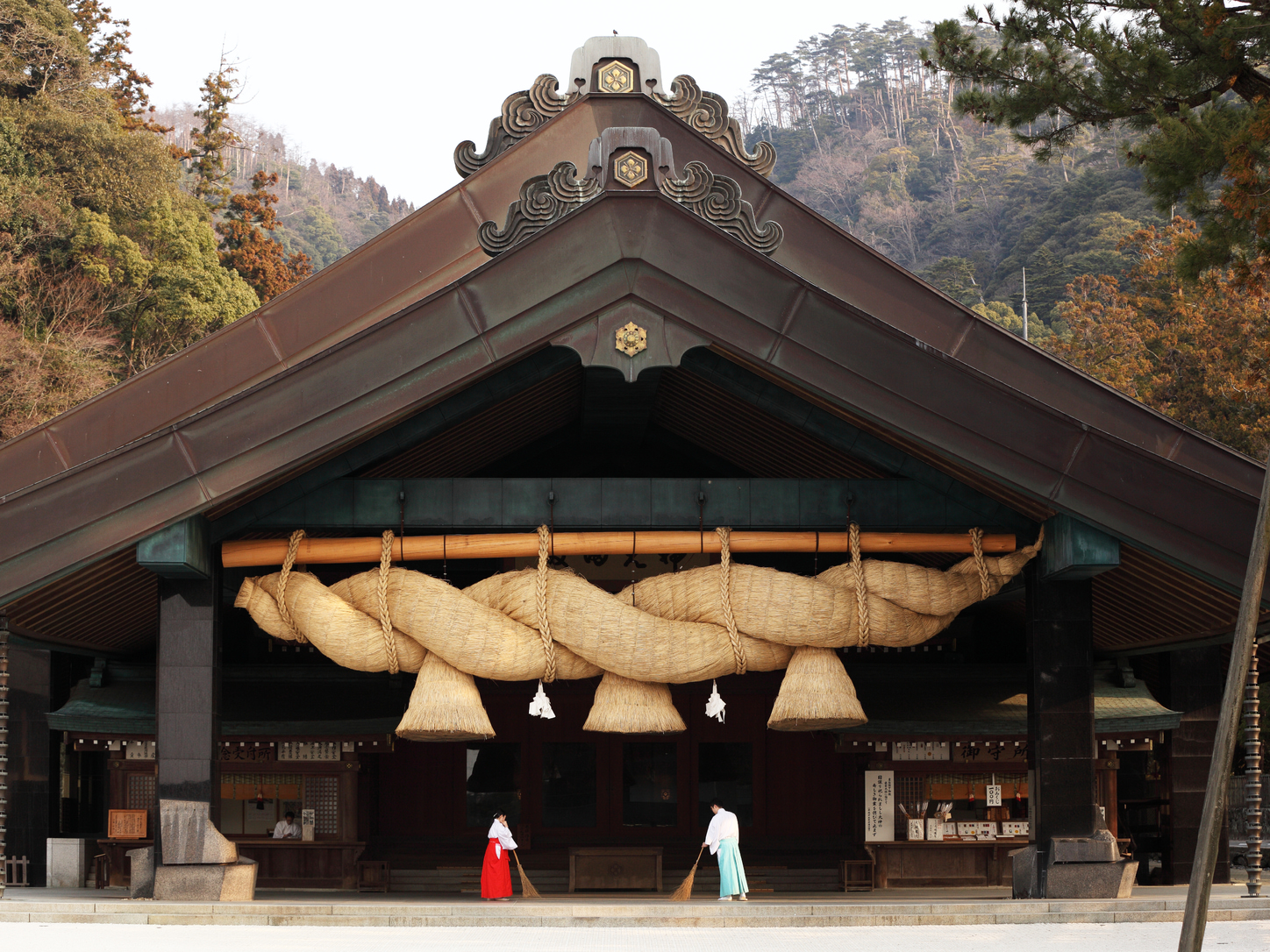If Shimane were a fantasy character, she would be the quiet one pretending to be just an ordinary person while, in fact, she’d be the one leading the story in a genuinely enigmatic, elegant and robust manner. Shimane Prefecture, located in western Japan’s Chugoku region along the Sea of Japan coast, is that kind of place — the second least populated prefecture in Japan and one that often gets forgotten in guide books. But if you want to truly discover the core of Japan and its most untouched beauty and secrets, follow us on this three-day uplifting journey of Shimane’s spirituality, folklore and healing nature.
Day One: Mind & Body Healing in Shimane
Collect Good Fortune at Izumo Enmusubi Airport
It’s shortly after 9am when you find yourself just landed at Izumo Airport after a less-than-90-minute plane ride from Tokyo. Also known as Izumo Enmusubi Airport (Airport of Romantic Fate), this gateway to the prefecture greets you in the most romantic way, already making you feel as if you’re bound for a journey of life-changing encounters. Scattered around the airport are various objects with which you can take photos or pray for good relationships.
Home to Izumo in the east of the prefecture, a mystic region known as the birthplace of Japan as inscribed in the nation’s oldest chronicles, “Kojiki” (Records of Ancient Matters), Shimane’s locals will tell you they are blessed with the constant presence of gods and deities who dwell across its lands. As such, the prefecture has embraced spirituality and the belief in good fortune — something you’ve just encountered at Enmusubi Airport.
Taking in all the good blessings for a good trip, pick up your rental car from the airport and get ready to explore. Your next stop is the Adachi Museum of Art, one of Shimane Prefecture’s most picturesque destinations.
Embrace the Season at Adachi Museum of Art
In less than an hour’s drive from the airport, you’ve reached the beautiful Adachi Museum of Art, a local landmark known for its extensive art collection of Japanese paintings, but even more so for its stunningly beautiful Japanese garden. Founded by a local businessman called Zenko Adachi in 1970, the vast museum combines its founder’s two passions in life – his love for art and gardens.
“This award-winning garden is living art in itself”
The museum houses about 1,500 works by renowned Japanese painters from different generations and art schools, as well as an extensive collection of ceramic works by Rosanjin Kitaoji, a well-known Japanese ceramist. Take your time to browse through the paintings before you step into the museum garden – that’s where you’ll spend most of your time as you sit down to fully embrace the beauty of the season displayed in front of you. This award-winning garden, accessible only from the museum’s building, is living art in itself, presenting the beauty of the four seasons throughout the year.
Whenever you travel here, you can always find something to look forward to – the blue and pink azaleas in spring, the fresh greenery in summer, the crimson foliage in autumn or snow-covered landscapes in winter. It’s a canvas that gets painted in front of you, minute after minute until the whole picture is complete.
And once you’re satisfied with the finished artwork, it’s time to grab some lunch – or afternoon coffee if you’ve stayed in the garden for a bit too long. The museum houses two cafes and a traditional tea house where you can rest before moving on to the next breathtaking Shimane spot on the agenda.
A Sunset to Remember at Lake Shinji
Riding for approximately 30 minutes from the museum will take you to Lake Shinji, located in the capital of Shimane, Matsue. Shinji-ko, as its known locally, is the seventh largest lake in Japan and the prefecture’s number one go-to spot for watching the sunset. It’s so popular that the city even has a website to inform visitors of the probability of seeing the sunset on any given day and when to head to the lake for the best view – in most cases, it’s past 7pm if you’re heading there on a fine day in early summer.
The view in front of you is like nothing you’ve seen before: your line of sight is unobscured and the colors (far exceeding all normal shades of red and yellow) reflecting in the lake form a magnificent picture you cannot easily forget. Although the vista can be seen from anywhere near Lake Shinji, one of the best places to observe it from is Shirakata Park, a few minutes’ walk from Matsue Station.
Feel Rejuvenated at Tamatsukuri Onsen, the “Hot Springs of the Gods”
Tamatsukuri Onsen is the perfect destination to end a day full of emotions. Located in the mountains along the Tamayu River and easily accessible from central Matsue, Tamatsukuri Onsen is a popular resort that boasts 16 hotels and ryokan (Japanese-style inns) where visitors can experience a thorough mind and body healing in the area’s hot springs, which have received an award from the Minister of Environment.
According to local legends, the Tamatsukuri springs were mentioned in ancient chronicles as having the power to “rejuvenate your skin from the first soak, and heal any diseases on the second.”
Because of this, Tamatsukuri Onsen is known locally as “the hot springs of the gods” and for having exceptional beautifying effects on the skin. Experts will proudly show you various data that conclude that Tamatsukuri’s hot springs contain the highest proportion of skin-moisturizing ingredients when compared with other onsen in Japan. All in all, this is the place to stay for a night or two and feel fully rejuvenated – both physically and emotionally.
Day Two: Walk, See, Learn
Travel Back in Time at Matsue Castle and Its Surroundings
On day two, get ready for a day of walking around some of Shimane’s most renowned cultural spots and landmarks. The first on the list is Matsue Castle, Shimane’s top landmark, located just a 15-minute drive from Tamatsukuri Onsen. Matsue Castle is one of the few remaining original castles in Japan. It was built in 1611 by the lord of the Matsue domain Yoshiharu Horio.
“Matsue Castle is one of the few remaining original castles in Japan”
This site offers an extensive view of the city – the same view as the samurai (probably) enjoyed back in the day – and was designated a national treasure in 2015. Surrounded by forests, temples, shrines and other key sightseeing spots, the castle is also a pleasant destination for taking a stroll in Matsue Jozan Park, a vast green area within the castle grounds. The park is exceptionally stunning in spring when the cherry blossom trees are in full bloom, but an autumn visit is equally mesmerizing.
To complete your visit, hop on a sightseeing boat along the castle moat or take a walk along Shiomi Nawate Street. This 500m-long street is lined with traditional houses including former samurai residences and tea ceremony rooms. Matsue is one of Japan’s top three most popular places for enjoying tea. Try matcha green tea paired with Japanese wagashi (traditional confections). Every year in October, you can attend the Matsue Castle Tea Ceremony event in the castle park.
The Lafcadio Hearn former residence (now a memorial museum) is one of the must-visit buildings on the street. Hearn, one of the most prolific foreign-born writers to introduce Japan to the Western world, settled in Matsue in 1890 where he met his Japanese wife and lived as Koizumi Yakumo for a little over a year.
Take a Stroll Through History at Iwami Ginzan Silver Mine
Shifting from Matsue Castle and its surroundings to a much more secluded but equally captivating site, your next step is a trip to Iwami Ginzan Silver Mine in the city of Oda, a 90-minute drive from Matsue. Designated a UNESCO World Heritage Site in 2007 collectively with its encompassing area, Iwami Ginzan was an underground silver mine – the largest in Japanese history – that was active for almost 400 years until 1923. Today, the mine skeletons remain, attracting visitors in pursuit of a quiet retreat.
The area’s highlight is the former silver mine where you can see shafts and ruins from Iwami’s mining period, but Omori town, where the silver mine is based, is equally worth a visit. It houses a variety of museums and historical residences as well as cozy cafés and shops.
Forget It All at Yunotsu Onsen
Also based in Oda city, Yunotsu is a small port town that played an important historical role for Shimane for its shipping of silver, which was mined at the Iwami Ginzan Silver Mine. Today the town boasts many traditional inns and shops, mostly lined on its main street, but the greatest local attraction are the healing hot springs native to the area (some of the hot springs date back to 1,300 years ago).
“Yakushiyu is said to have the power to heal any earthly illness”
There are two public bathhouses in Yunotsu including Motoyu Onsen, which has naturally brown mineral-rich waters that promise to heal all aches and pains, and Yakushiyu, one of the best known and highest rated hot springs in the country. Housed in a retro building, Yakushiyu is said to have the power to heal any earthly illness. After bathing, have a cup of freshly brewed hot coffee (free of charge). Your beverage can be enjoyed on the building’s rooftop garden terrace. This in itself is a self-healing experience like no other.
Looking for one more thing to do? While in the area, head to Tatsunogozen Shrine to enjoy a thrilling performance of Iwami Kagura (masked dance theater).
Day Three: Delve into the Land of the Gods
Join Japan’s Holiest Gathering at Izumo Taisha Grand Shrine
You have saved the last day on your Shimane trip to do what most come here to do – and that doesn’t only include humans. Every year, during the 10th lunar month (usually falls in October or November), it is believed that Shinto’s myriad deities travel from across the land to Izumo Taisha Grand Shrine for an important gathering. And if they are willing to travel to this shrine, it tells you much about its significance.
Although there are no records of exactly when Izumo Taisha Grand Shrine was built, local people believe that it’s the oldest shrine in Japan based on the fact that it appears in Japan’s ancient chronicles (which means it was there as early as in the 700s). Izumo Taisha Grand Shrine is one of Japan’s most beautiful and spiritual shrines as well as one of the nation’s most visited destinations to pray for strong marriage and relationships.
The ritual for praying at Izumo Taisha Grand Shrine differs from the standard – instead of clapping twice as you’d usually do at a Shinto shrine, here at Izumo, you clap four times. As a good fortune shrine, Izumo Taisha Grand Shrine is also a popular wedding spot – you may even witness a wedding procession on your visit.
Before you head back to the airport, stop by the Shimane Museum of Ancient Izumo, located immediately east of the Izumo Taisha Grand Shrine grounds. This beautiful museum is where visitors can learn more about the origins of the shrine and its practices, as well as the history of the Izumo region, a site of many important ancient Japanese historical discoveries.
With the memories of your trip packed in your bag, the next stop is, sadly, your exit from Shimane Prefecture. But as you board that plane to return to reality, you know that something inside you is different. You’ve changed. And you also know that you’ll keep coming back to Shimane for more of that.
Two More Recommended Destinations
If you’ve got some extra time on your trip, the Oki Islands and Tsuwano are also worth a day (or two)
Oki Islands
If you were impressed with Shimane’s nature and spirituality, you’ll also want to see the Oki Islands, a cluster of small islands designated a UNESCO Global Geopark and situated about 50km off the coast of Shimane. Here you’ll encounter some of Japan’s most spectacular views (sunsets too) along with the sight of animals grazing freely with the islands’ abundant beauty as a backdrop. The islands can be reached by ferry (two hours) or on the Fast Ferry Rainbow Jet from Shimane’s Shichirui Port (two hours).
Tsuwano
For an extra history boost, head to Tsuwano, a retro town in western Shimane. Here you will feel as if you’ve jumped into an old samurai photo — in the “old town” of Tsuwano you will find many old samurai residences, portraying scenes reminiscent of past centuries. Tsuwano is about a three-hour drive from Izumo Taisha Grand Shrine.
Access To and Within Shimane
Shimane Prefecture can be reached from Tokyo by airplane via the prefecture’s two airports: Izumo Airport and Hagi Iwami Airport; via express bus from Tokyo or Shinjuku stations in Tokyo; or by bullet train to Okayama or Shin-Yamaguchi, followed by a transfer to a limited express to Yasugi, Matsue, Izumo and Tsuwano. The overnight train Sunrise Izumo can also be boarded from Tokyo. The best way to travel within Shimane is by car.
Sponsored Post
Updated On December 26, 2022

